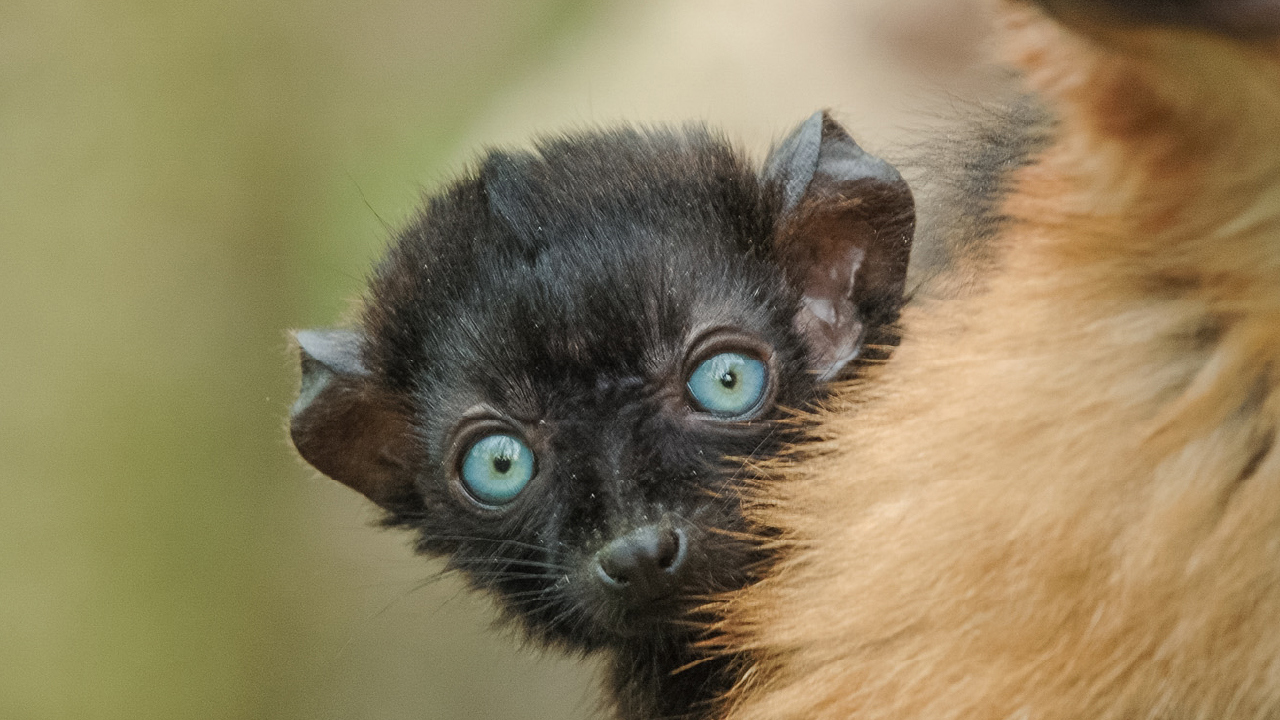Blue-eyed black lemur
Eulemur flavifrons
Habitat
Primary and secondary subtropical forests
Food
Fruits, leaves and flowers
Weight
± 2.0 kg
Age
± 20 years
IUCN Status
Ernstig bedreigd
Appearance
Their name might lead you to think that all blue-eyed black lemurs have blue eyes, but that’s not the case. Their eye colour can range from pale green to grey (and everything in between). The males have black fur, the females light to dark brown. Blue-eyed black lemurs have a wet nose with whiskers, a grooming claw on their second toe and a relatively small brain: all of which are characteristics of prosimians.
Habitat
In het wild, blue-eyed black lemurs live on the African island Madagascar. To be precise, on the peninsula Sahamalaza, in northwest Madagascar. This is the only place on earth where blue-eyed black lemurs exist in the wild. They live in primary and secondary subtropical humid forests.
Lifestyle
Blue-eyed black lemurs live in groups of two to fifteen animals. A group usually consists of one or two adult females and often a few younger females. The females are in charge, as is the case with most prosimians. The males often live at the edge of a group and often switch groups.
Behaviour
Blue-eyed black lemurs communicate a lot through smells. By leaving their scent behind they mark their territory, among other things. Their scent also says something about their age, sex and whether they’re looking for a mate. Both males and females use, among other glands, the scent gland near their anus for this. The males also have glands on their wrists. They rub branches to leave behind their scent.
Reproduction
In the wild, blue-eyed black lemurs mate from April to June. The babies are usually born in autumn. The babies are born with grey-black fur. The mothers are very protective of their young. They can even be very aggressive towards their own group in the first weeks. During the first three weeks, the babies hang on tightly to their mothers. After three weeks they take their first careful steps. Slowly but surely the other group members are allowed to come closer. During this period the baby also carefully tries some solid food.
Situation in the wild
Blue-eyed black lemurs are threatened with extinction. The poor inhabitants of Madagascar clear the forests where blue-eyed black lemurs live to make room for agriculture. Blue-eyed black lemurs are also hunted. In 2017, Apenheul sent a team to Madagascar to investigate the population. There are still a few thousand individuals, but most of them live in areas that aren’t protected.

Want to see the blue-eyed black lemur at Apenheul?
Get your tickets now and spot all the primate species!

Welcome to Apenheul
Open from:
10.00 hour